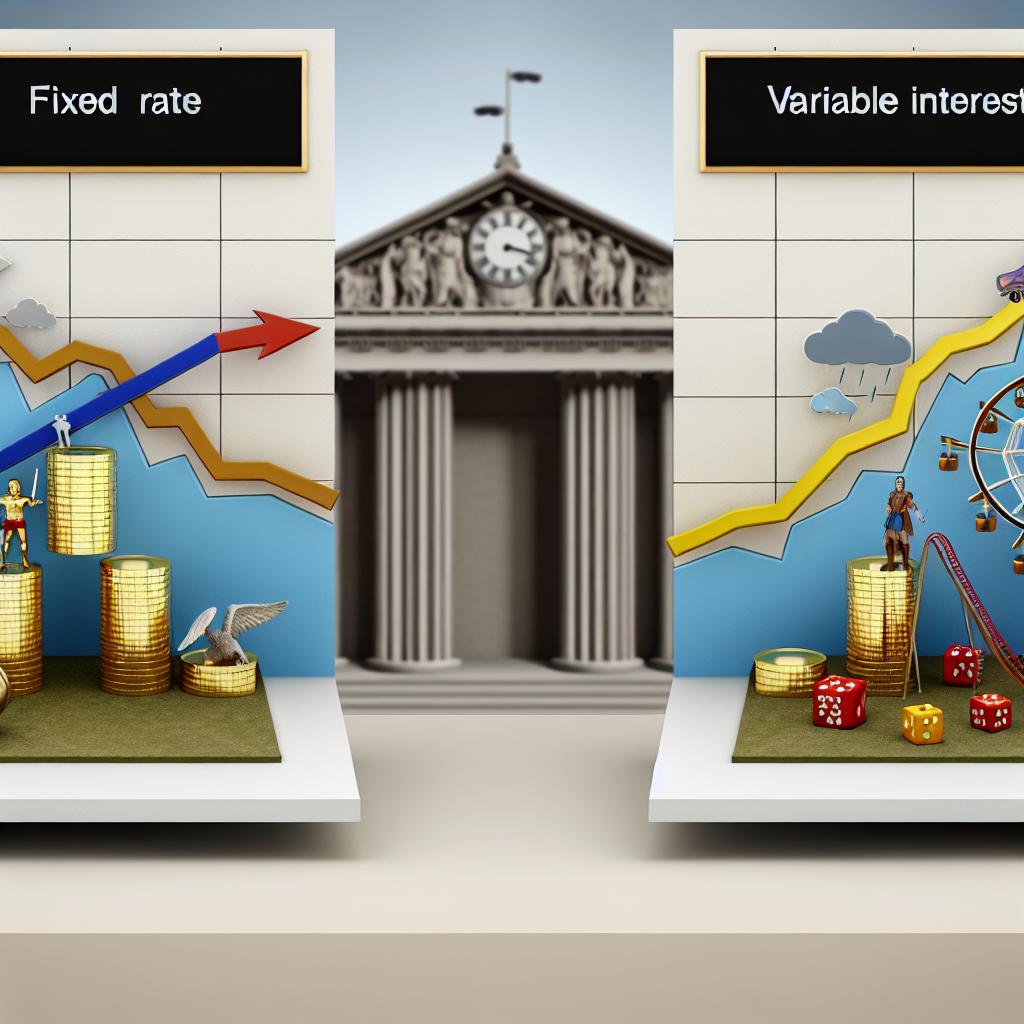Understanding Fixed and Variable Interest Rates
When taking out a loan or mortgage, understanding the type of interest rate can significantly impact your financial planning. The two main types of interest rates are fixed and variable. Each has its distinct characteristics and benefits, suitable for different financial situations.
What is a Fixed Interest Rate?
A fixed interest rate remains constant throughout the life of the loan. This means that you pay the same interest rate over the entire term, resulting in predictable monthly payments. Fixed rates offer stability and can be beneficial for borrowers who expect stable income and prefer to avoid surprises in their monthly budgets.
Key Characteristics of Fixed Interest Rates:
- Unchanging Rate: The rate agreed upon at the beginning of the loan term remains the same.
- Predictable Payments: Monthly payments stay consistent, which can make budgeting easier.
- Protection from Rate Increases: Borrowers are protected from interest rate hikes in the market.
Fixed interest rates are particularly advantageous for long-term financial planning. When you know the exact amount you need to budget for over an extended period, it simplifies your overall financial strategy. For example, if you are buying a home and plan to live there for several years, a fixed rate provides the assurance that there will be no unexpected payment changes, aiding in long-term budgeting and planning. This level of predictability can bring peace of mind when managing other financial commitments, such as saving for retirement or for a child’s education.
Moreover, fixed rates are beneficial during times of economic instability or when interest rates are on the rise. By securing a fixed rate, borrowers are effectively shielding themselves from sudden hikes that could increase the cost of borrowing in future years. It is an appealing option for risk-averse borrowers who value consistency and are willing to potentially forego the chance to benefit from a decrease in rates.
What is a Variable Interest Rate?
A variable interest rate, sometimes known as a floating rate, can change over time based on broader economic trends. These rates are usually tied to a benchmark or index, such as the prime rate or LIBOR. As these indices fluctuate, so will your interest rate and monthly payment amounts. Variable rates might appeal to those expecting declining rates or who have flexible budget capacities.
Key Characteristics of Variable Interest Rates:
- Fluctuating Rate: The interest rate can go up or down over the course of the loan.
- Potentially Lower Initial Rates: Initially, variable rates can be lower than fixed rates.
- Risk of Increased Costs: Payments can become unpredictable if rates increase significantly.
Variable interest rates can be particularly attractive at the start of a loan term. Often offering a lower initial rate than fixed rates, they can lead to short-term savings and lower initial payments. This is especially beneficial for those who plan to pay off their loan quickly or are confident they can manage potential rate increases. For instance, if you are certain that your income will increase or that you will refinance the loan before the rates rise, a variable-rate loan might be appropriate.
On the other hand, because these rates are subject to change, they require careful attention to financial trends and a degree of comfort with uncertainty. As such, they may be better suited to those who have a higher risk tolerance and are prepared to adjust their financial strategies as markets change. This choice could potentially lead to savings if market conditions lead to a decline in interest rates, but it could equally lead to increased costs should the rates rise unexpectedly.
Choosing Between Fixed and Variable Rates
Deciding between a fixed or variable interest rate often depends on your financial situation, market conditions, and personal preferences. Considerations include:
Financial Stability: If you prefer stability and consistent payments, a fixed rate might be more suitable. Conversely, if you anticipate a future decrease in rates or have flexible finances, a variable rate could be advantageous.
Market Conditions: In a low-interest environment, locking in a fixed rate may protect you from future increases. Conversely, if rates are expected to decline, a variable rate could offer savings.
When making this choice, it’s critical to analyze the current economic climate. Interest rate trends, inflation expectations, and central bank policies all influence rate fluctuations. Comprehensive analysis and understanding of these factors can empower you to select the option that complements your financial goals and tolerance for risk. If you are unsure, it may be beneficial to consult with a financial advisor to understand what best fits your personal circumstances.
Explore more on financial services for personalized advice tailored to your circumstances.
Conclusion
Both fixed and variable rates have their pros and cons, and the right choice depends on your individual financial situation and market expectations. By understanding these differences, you can make informed decisions that align with your financial goals.
When planning for a loan, mortgage, or any long-term borrowing, evaluating how these types of interest rates affect your finances is essential. Fixed rates offer predictable financial planning, while variable rates can potentially offer savings should the market conditions be favorable. Whether you prioritize stability or potential cost savings should direct your decision between these two interest rate types.
In conclusion, while fixed interest rates offer predictability and insulation from interest volatility, variable rates provide an opportunity to benefit from favorable market conditions, albeit with inherent risks. Selecting the appropriate rate demands careful consideration of personal finances, economic forecasts, and individual goals. Both options have unique advantages, and leveraging them appropriately can help enhance financial management over the term of the loan or mortgage.
